Background of the project
Marine litter is generally defined as «any material or solid object lasting; manufactured, discharged, lost or abandoned, voluntarily or not, in the marine and littoral environment»[1].
The European Environment Agency (EAE) estimates that every year, 10 million tons of marine litter is being discharged into the seas and oceans of the world. Even though the most common type of waste in the marine environment is plastic, the list is endless: fishing nets, ropes, menstrual pads, tampons, Q-tip etc. The last report published by the Spanish Ministry of Agriculture on marine litter stranded on the Spanish beaches during 2015 (MAGRAMA, 2016) has acknowledged the most frequent objects, that represent 80% of the total of identified objects. Those objects are grouped in the “Top X”, which in Spain includes 16 objects:
| 1 | Plastic parts 0-2,5 cm | 9 | Synthetic foams |
| 2 | Ropes (Ø<1cm) | 10 | Other plastic objects |
| 3 | Cigarette butts | 11 | Plastic bags |
| 4 | Plastic parts 2,5 – 50 cm | 12 | Wood parts < 50 cm |
| 5 | Plastic lids and stoppers | 13 | Food packing |
| 6 | Q-tips | 14 | Straws / cutlery / plates |
| 7 | Candy and Snacks packs | 15 | Industrial packing |
| 8 | Plastic bottles | 16 | Cans |
Litter, that we find indistinctly in all seas and oceans, have numerous repercussions on the environment, local economy and individuals’ health. 15% of the waste spilled into the sea are discharged on the coast, 15% float in surface and the remaining 70% go under water and are engulfed by the seabed[2]. This means that we see only the top of the iceberg and that society does not realize the real dimension of the problem associated with marine litter.
Numerous specialized scientific publications focused on the definition of the concept and origin of marine litter[3] and have studied their distribution and their volume in various seas. Notification protocols and surveillance guides have been developed[4] and studies on microplastics have started[5]. Next step is to reduce the quantity of marine litter to arrive in 2020 at a ‘good ecological state’ of the marine environment, following the expectations of Descriptor 10 of the framework directive “Strategy for the Marine Environment” (Directive 2008/56/CE) with regards to marine litter.
The Bay of Gascogne is an area of special interest because it concentrates a multitude of tasks associated to artisanal and commercial fishing and tourism. Those activities require a healthy environment to develop. The cost for maintaining clean beaches is enormous for administrations: we estimate that around 350 million euros are spent each year on the maintenance of European coasts. And that is without counting the economic and social effort invested in environment education, in eco-design and in promotion of new production options.
Based on this need, Life LEMA was created to contribute to the adequate management of marine litter by local authorities, as a complement to prevention and sensitization programs that will be useful to address this issue and find solutions.
[1] UNEP, Marine Litter: A Global Challenge, in: N. Meith (ed.), United Nations Environmental Programme,, Nairobi, Kenya, 2009, pp. 232.
[2] UNEP, Marine litter, an analytical overview, in: United Nations Environmental Programme (ed.), Nairobi, Kenya, 2005, pp. 47.
[3] S.D. Whiting, Types and sources of marine debris in Fog Bay, Northern Australia, Marine Pollution Bulletin, 36 (1998) 904-910.
[4] A.C. Cheshire, E. Adler, J. Barbière, Y. Cohen, S. Evans, S. Jarayabhand, L. Jeftic, R.T. Jung, S. Kinsey, E.T. Kusui, Lavine, I., P. Manyara, L. Oosterbaan, M.A. Pereira, S. Sheavly, A. Tkalin, S. Varadarajan, B. Wenneker, G. Westphalen, UNEP/IOC Guidelines on Survey and Monitoring of Marine Litter., in: IOC Technical Series No. 83, UNEP Regional Seas Reports and Studies, 2009, pp. xii+ 120 pp.
[5] P.G. Ryan, C.J. Moore, J.A. van Franeker, C.L. Moloney, Monitoring the abundance of plastic debris in the marine environment, Philosophical Transactions of the Royal Society B: Biological Sciences, 364 (2009) 1999-2012.
